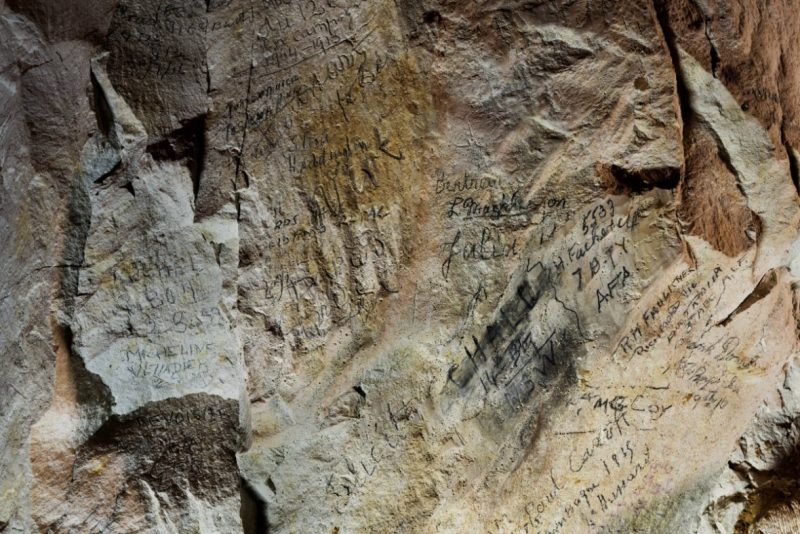British and Australian soldiers stationed in France would occasionally be allowed to leave the front lines in order to visit local attractions. There is evidence of this tourism in the underground city of Naours, a large network of ancient tunnels in the rural region of Picardy in northern France.
In 2014, Gilles Prilaux of the French National Institute for Preventive Archaeological Research (INRAP), coordinated archaeological research to date the construction of the tunnels more accurately. They found evidence that the tunnels date back to the 16th century. That became a secondary goal after they discovered hundreds of examples of graffiti left behind by World War I soldiers.
“It is quite surreal to conduct archaeological work in a site already visited by an important number of tourists,” says Prilaux, “but when we started we had two pieces of good news. The first one was that the tunnels, including the floors, were in a good state. The second was that we discovered many inscriptions on the walls, either in rooms that had not been opened to the public or in rooms they had had access to, but hidden by the semi-darkness that reigns in Naours tunnels.”
The project changed scope and became an effort to identify, map, and photograph the graffiti. So far, they have cataloged over 2,800 examples. Typically, soldiers left their names, nationalities, and battalion number. Archaeologists have found prominent figures among the names. Prilaux says:
“Most soldiers left these marks using wooden pencils, so it feels like the inscriptions were made just five minutes ago. It is very moving, especially since we have been able to identify many names; normal men, everyday heroes … but also ‘celebrities’ who fought in the war.”
Leslie Russell Blake, the famous Australian explorer and cartographer, was a particularly interesting find. The respected scientist did extensive work in the Antarctic. He became famous for his exploration of the Macquarie Island. He is considered a war hero for his bravery during the battle of the Somme before he was killed in October 1918.
The name of Allan Allsop was another exciting find for the team. Allsop was an Australian clerk who wrote detailed diaries during the war. Checking the date on his graffiti, January 2nd, 1917, with his diary entry from the same day, the scientists learned something new. In his diary, Allsop mentions the shuttle service they took to the tunnels, which demonstrates that a tourism industry existed in the area at the time.
Despite what was previously believed, the tunnels in Naours were not used as a shelter or as a military hospital. Instead, they were a place for soldiers to relax, a tourist spot where they could find a brief respite from the realities of life on the front lines.
“It is estimated that soldiers only spent about 20% of their time on the front line,” Prilaux explains. “The rest of the time they trained, rested, or were provided with distractions to forget about their dire conditions. As astonishing as it may sound, a touristic visit of Naours would have served that purpose.”
Three or four chambers of the tunnels that were not opened to the public before will now be accessible to groups who want a guided tour of the graffiti. The hope is that the inscriptions left by British and Australian soldiers will encourage tourism from those countries.
